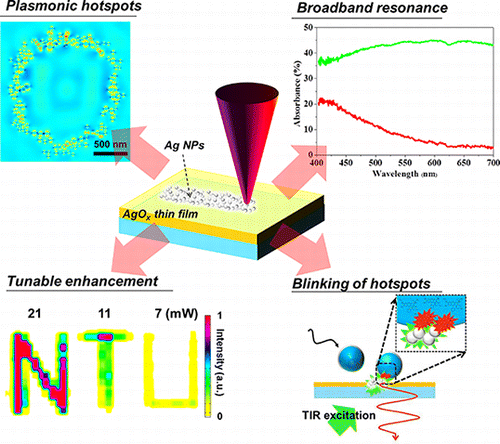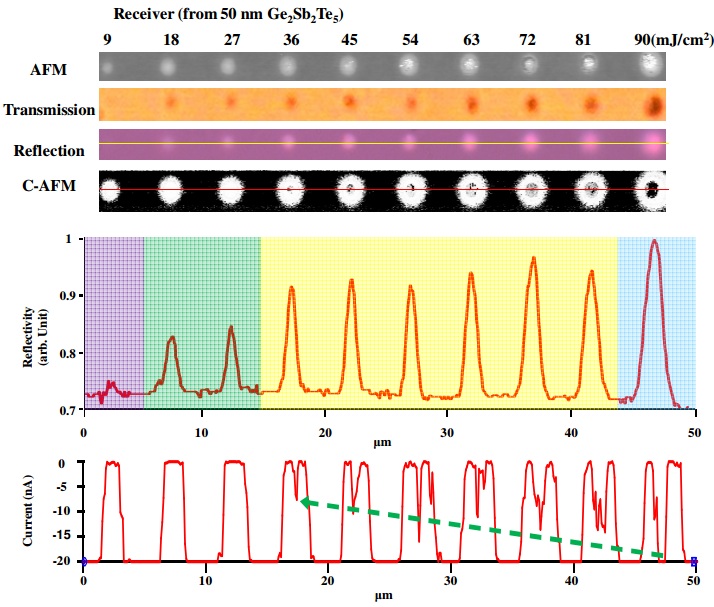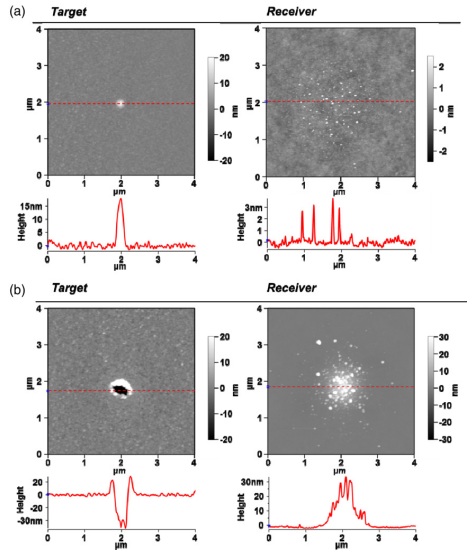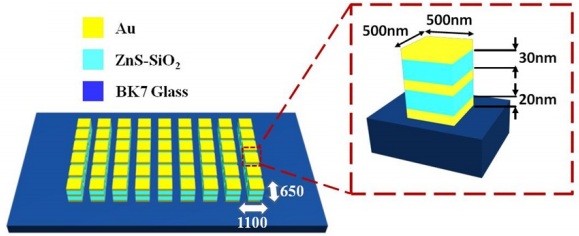Laser Ablation
|
|
|

Laser-induced phase transitions of phase-change chalcogenide
Amorphous thin films of Ge2Sb2Te5, sputter-deposited on a ZnS-SiO2 dielectric layer, are investigated for the purpose of understanding the structural phase-transitions that occur under the influence of tightly-focused laser beams. Selective chemical etching of recorded marks in conjunction with optical, atomic force, and electron microscopy as well as local electron diffraction analysis are used to discern the complex structural features created under a broad range of laser powers and pulse durations. Clarifying the nature of phase transitions associated with laser-recorded marks in chalcogenide Ge2Sb2Te5thin films provides useful information for reversible optical and electronic data storage, as well as for phase-change (thermal) lithography.
Laser-induced phase transitions of Ge2Sb2Te5 thin films used in optical and electronic data storage and in thermal lithography
C. H. Chu, C. D. Shiue, H. W. Cheng, M. L. Tseng, H. P. Chiang, M. Mansuripur, D. P. Tsai
Optics Express 18(17), 18383-18393 (2010). [Link]
|
|
|
|

Ag nanostructure substrate
Using a femtosecond laser, we have transformed the laser-direct-writing technique into a highly efficient method that can process AgOxthin films into Ag nanostructures at a fast scanning rate of 2000 μm2/min. The processed AgOx thin films exhibit broad-band enhancement of optical absorption and effectively function as active SERS substrates. Probing of the plasmonic hotspots with dyed polymer beads indicates that these hotspots are uniformly distributed over the treated area.
Fast fabrication of a Ag nanostructure substrate using the femtosecond laser for broad-band and tunable plasmonic enhancement
M. L. Tseng, Y.-W. Huang, M.-K. Hsiao, H. W. Huang, H. M. Chen, Y. L. Chen, C. H. Chu, N.-N. Chu, Y. J. He, C. M. Chang, W. C. Lin, D.-W. Huang, H.-P. Chiang, R.-S. Liu, G. Sun, D. P. Tsai
ACS Nano 6(6), 5190-5197 (2012). [Link]
|
|
|
|
Laser-Induced Forward-Transfer, LIFT
|
|
|

Multi-Record of Phase-Change Chalcogenide
Femtosecond laser pulses are focused on a thin film of Ge2Sb2Te5 phase-change material, and the transfer of the illuminated material to a nearby substrate is investigated. The size, shape, and phase-state of the fabricated pattern can be effectively controlled by the laser fluence and by the thickness of the Ge2Sb2Te5 film. Results show multi-level electrical and optical reflection states of the fabricated patterns, which may provide a simple and efficient foundation for patterning future phase-change devices.
Fabrication of phase-change chalcogenide Ge2Sb2Te5 patterns by laser-induced forward transfer
M. L. Tseng, B. H. Chen, C. H. Chu, C. M. Chang, W. C. Lin, N.-N. Chu, M. Mansuripur, A. Q. Liu, D. P. Tsai
Optics Express 19(18), 16975-16984 (2011). [Link]
|
|
|
|

Gold Plasmonic Devices
Using femtosecond laser-induced forward transfer techniques we have fabricated gold dots and nanoparticles on glass substrates, as well as nanobumps on gold thin film. The surface morphologies of these structures with different laser fluences and film thicknesses are investigated. We also study the focusing and defocusing properties of the nanofence—an arranged nanobump pattern—by the total-internal reflection microscope. Observations reveal that surface plasmon waves can be highly directed and focused via this nanofence pattern. Results are in good agreement with the simulation results using the finite-element method and demonstrate the potential applications of these nanophotonic devices. Furthermore, we utilize high laser energy to fabricate plasmonic waveguides, and also succeed in transferring the waveguides to another substrate. The attenuation rates of the light propagating in the waveguides are observed to achieve 0.31 dB μm-1 and 0.48 dB μm-1 on the target and receiver sides, respectively.
Fabrication of plasmonic devices using femtosecond laser-induced forward transfer technique
M. L. Tseng, C. M. Chang, B. H. Chen, Y.-W. Huang, C. H. Chu, K. S. Chung, Y. J. Liu, H. G. Tsai, N.-N. Chu, D.-W. Huang, H.-P. Chiang, D. P. Tsai
Nanotechnology 23, 444013 (2012) [Link]
|
|
|
|
Multilayer Metamaterials by LIFT
|
|
|

Multilayer Split-Ring Resonators
A novel method based on femtosecond laser-induced forward transfer for high-throughput and efficient fabrication of periodic multilayer plasmonic metamaterials is demonstrated. With precisely controlling laser raster path applied on sputtered multilayer thin films, the laser-ablated materials can be transferred to another substrate leaving the fabricated multilayer structure on the original substrate. Subsequently, three-dimensional metamaterials can be made by multilayer structuring. Moreover, all the experimental results show that to create such multilayer split resonant rings (SRRs) with uniform profile, the laser fluence should be fine controlled under proper conditions. The optical property of fabricated multilayer SRR array is investigated by optical measurements and finite-difference time-domain simulations, showing various resonant modes in the middle-IR region. The calculated induced current distributions exhibit rich resonance properties of the structures as well. This work markedly extends the laser direct writing technique to a wide application in fabricating complicated metamaterials and plasmonic devices efficiently.
Fabrication of multilayer metamaterials by femtosecond laser-induced forward-transfer technique
M. L. Tseng, P. C. Wu, S. Sun, C. M. Chang, W. T. Chen, C. H. Chu, P. L. Chen, L. Zhou, D.-W. Huang, T. J. Yen, D. P. Tsai
Laser & Photonics Reviews 6, 702-707 (2012) [Link]
|
|
|
|

Plasmonic Cavity
We fabricated a three-dimensional five-layered plasmonic resonant cavity by low-cost, efficient and high-throughput femtosecond laser-induced forward transfer (fs-LIFT) technique. The fabricated cavity was characterized by optical measurements, showing two different cavity modes within the measured wavelength region which is in good agreement with numerical simulations. The mode volume corresponding to each resonance is found to be squeezed over 104 smaller than the cube of incident wavelength. This property may facilitate many applications in integrated optics, optical nonlinearities, and luminescence enhancement, etc.
Fabrication of three-dimensional plasmonic cavity by femtosecond laser-induced forward transfer
W. T. Chen, M. L. Tseng, C. Y. Liao, P. C. Wu, S. Sun, Y.-W. Huang, C. M. Chang, C. H. Lu, L. Zhou, D.-W. Huang, A. Q. Liu, D. P. Tsai
Optics Express 21(1), 618-625 (2013). [Link]
|
|
|
|